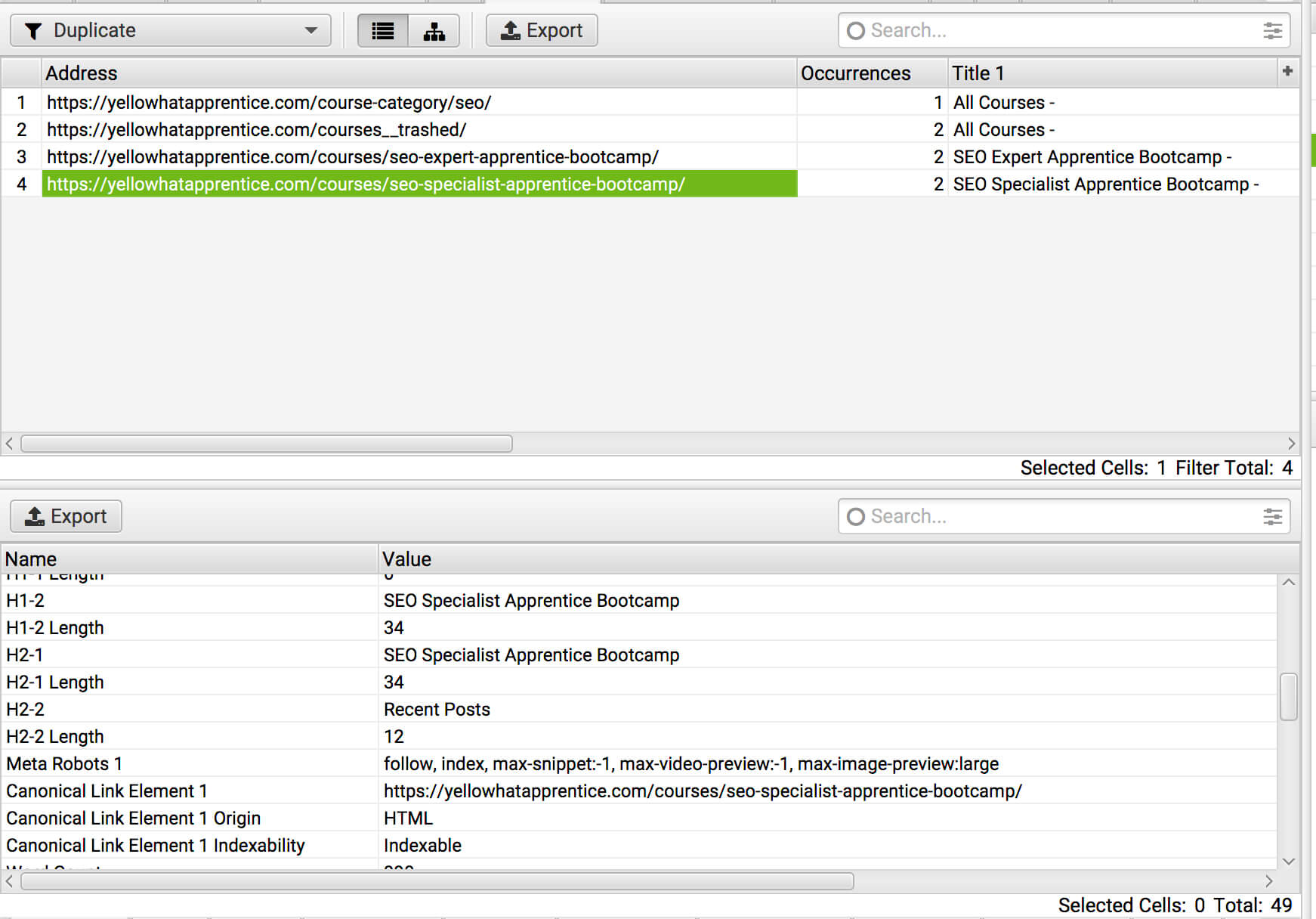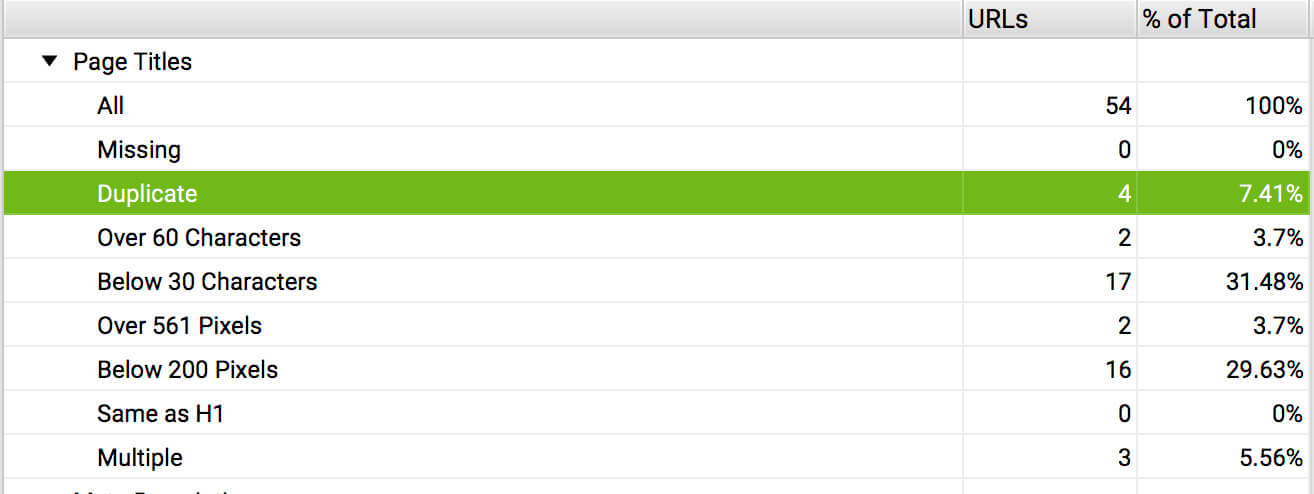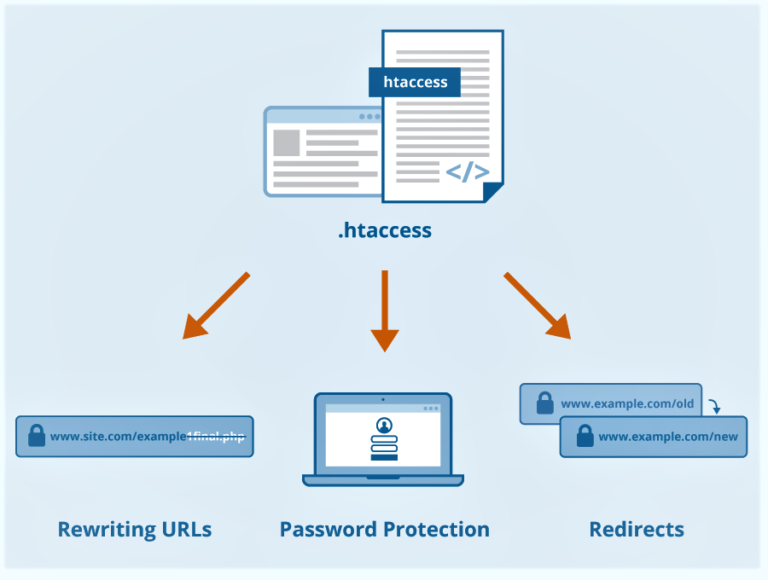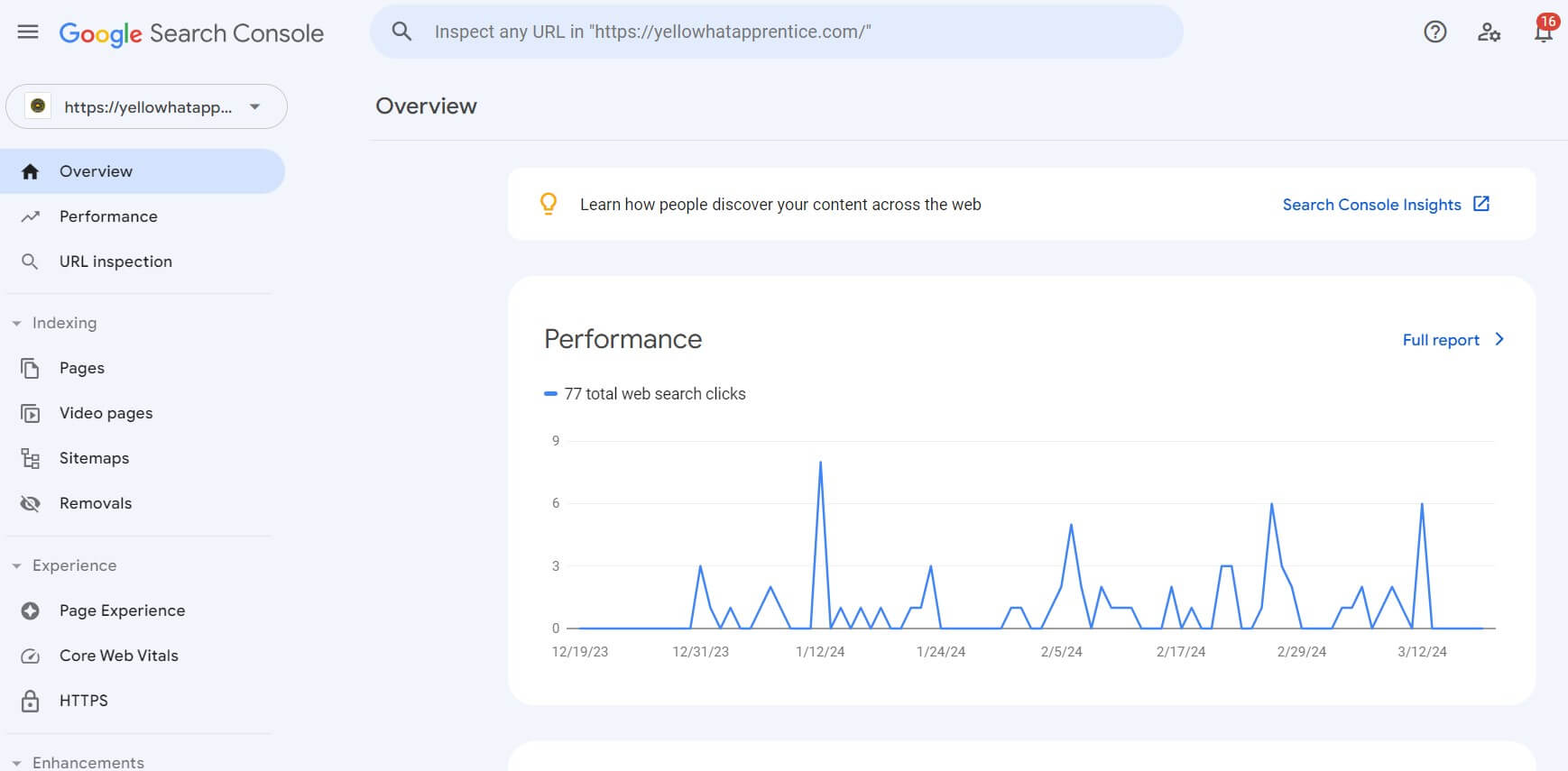Unraveling The Mystery of Duplicate Content : Your Ultimate Guide in 2023
June 27, 2023 | by Muhammad

Unraveling The Mystery of Duplicate Content :
Your Ultimate Guide in 2023
Welcome to our comprehensive guide on duplicate content and its impact on SEO. In today’s digital landscape, ensuring unique and valuable content is crucial for your website’s visibility and rankings on search engines like Google. In this article, we’ll delve into the definition of duplicate content, its potential consequences, and best practices to mitigate its negative effects. Let’s unlock the secrets of duplicate content together.

Demystifying Duplicate Content
Discover what duplicate content truly entails and how it extends beyond word-for-word replication.

Duplicate content refers to the presence of similar or identical content on multiple web pages. While it is commonly believed that duplicate content strictly refers to word-for-word replication, its scope extends beyond that. Duplicate content can encompass various forms, including but not limited to identical text, similar content with minor variations, or even completely unique content that covers the same topic or provides the same information.
Search engines like Google are constantly striving to provide the most relevant and diverse search results to users. Therefore, they have algorithms in place to detect and handle duplicate content appropriately. These algorithms aim to filter out redundant or low-quality content and prioritize original, valuable content in search engine results pages (SERPs).
When duplicate content is detected, search engines typically choose one version of the content to display in the search results, considering factors such as relevance, authority, and user experience. Other versions may be excluded or ranked lower in the SERPs, which can impact organic search visibility and traffic.
To Understand the Nuances of Duplicate Content, it's important to
consider the following scenarios:
Word-for-word Replication
This is the most obvious and straightforward form of duplicate content, where entire blocks of text or entire pages are replicated across multiple URLs without any modifications.
Near-Duplicates:
In this case, the content is largely similar but not identical. It may involve slight variations in wording, synonyms, rearrangement of paragraphs, or the inclusion/exclusion of additional information. While the differences might seem minor, search engines can still detect and interpret them as duplicate or highly similar content.
Scraped Content:
Some websites may scrape content from other sources and republish it without permission or proper attribution. This leads to instances of duplicate content across different websites. Search engines typically penalize sites that engage in scraping and prioritize the original source of the content.

How to Avoid Duplicate Content
To avoid negative consequences associated with duplicate content, website owners and content creators should follow the best practices:
Create Original and Unique Content
Strive to provide value and differentiate your content from existing sources.

Use canonical tags:
Specify the preferred version of a page when similar content exists on multiple URLs.
Implement 301 redirects:
If you have multiple versions of a page, redirect all the variations to a single canonical URL to consolidate authority and avoid diluting the page’s ranking potential.

Syndicate content responsibly
If you syndicate your content, use canonical tags or meta tags to attribute the original source and avoid penalties for duplicate content.
Monitor and Manage Scraped Content
Regularly check for instances of scraped content and take appropriate action to protect your original content.
Avoid Excessive URL Parameters
Utilize URL parameters handling techniques such as URL rewriting, canonical tags, or robots.txt directives to consolidate duplicate content resulting from URL variations. By understanding the nuances of duplicate content and taking proactive measures to mitigate its impact, website owners and content creators can maintain a strong online presence while providing valuable, unique content to their audience.
The Google Perspective: Gain insights into Google’s stance on duplicate content and why it prefers pages with distinct information.
SEO Impact: Understand the detrimental effects duplicate content can have on your website’s organic traffic and search engine rankings.
Identifying Duplicate Content Issues
Same Content, Different URLs
Learn about the common occurrence of duplicate content arising from multiple URLs and its implications.
Checking Indexed Pages
Explore techniques to identify duplicate content by examining the indexed pages of your website using Google Search or Google Search Console.
Correct Site Redirection:
Uncover the significance of redirecting different versions of your website to a unified destination using 301 redirects.
Resolving Duplicate Content Challenges
The Power of 301 Redirects
Discover how 301 redirects can effectively address duplicate content issues by directing users and search engines to the original content.
Similar Content Concerns:
Explore the concept of similar content and how it can still result in duplicate content problems. Emphasize the importance of unique content creation for each page.
Canonical Tags:
Unveil the role of canonical tags in signaling search engines about the original page amidst duplicate content instances, surpassing other methods like blocking or no indexing.
Leveraging Tools and Strategies
Duplicate Content Detection Tools
Introduce useful SEO tools such as siteliner that can help identify duplicate content across your website.
Consolidating Pages
Learn how consolidating pages with duplicate or similar content can enhance rankings and user experience.
Non-indexing WordPress Tag or Category Pages
For WordPress users, explore the option to noindex tag and category pages automatically generated by the platform.
How to Preventing Duplicate Content
Unique Content Creation:
Emphasize the significance of producing original and high-quality content for each page of your website. Provide tips on conducting thorough research, adding personal insights, and utilizing different angles to ensure uniqueness.
Structured Data Implementation
Highlight the importance of utilizing structured data markup to provide search engines with clear signals about the purpose and unique attributes of each page.
URL Parameters
Explain how URL parameters can create duplicate content issues and suggest implementing canonical tags or using the URL parameter tool in Google Search Console to consolidate signals.

Pagination Best Practices:
Address the challenges of paginated content and offer solutions like rel=prev/next tags, canonical tags, and implementing a “view all” option to consolidate content.
Monitoring and Maintenance of Website
Regular Content Audits
Encourage website owners to conduct periodic content audits to identify and address any instances of duplicate or similar content.
Ongoing SEO Monitoring
Stress the importance of continuously monitoring your website’s SEO performance, including organic traffic, rankings, and indexed pages, to quickly identify and resolve any emerging duplicate content issues.
User-Generated Content
Educate readers about the potential risks associated with user-generated content and provide guidelines on moderating and reviewing user submissions to maintain content originality.
What is Content Syndication and its Citation
Understanding Content Syndication
Explore the concept of content syndication and how it can potentially lead to duplicate content. Discuss the importance of proper citation and linking back to the original source to avoid penalties.
Guest Blogging Considerations
Highlight the potential risks associated with guest blogging when it comes to duplicate content. Provide guidelines on ensuring unique content creation for guest posts and avoiding duplicating content across multiple platforms.
Internationalization and Duplicate Content
Managing Duplicate Content in Multilingual Website
Address the challenges of duplicate content in multilingual websites. Discuss the implementation of hreflang tags and language-specific URLs to help search engines understand the intended audience and language variations.
Cross-Domain Duplicate Content
Explain the risks of cross-domain duplicate content, particularly when it comes to syndication or content sharing platforms. Provide strategies for proper attribution and avoiding content duplication across different domains.
Educating Users and Website Owners
User-Generated Content Guidelines
Offer recommendations and guidelines for website owners who allow user-generated content. Emphasize the importance of educating users about copyright infringement, plagiarism, and the significance of providing unique contributions.
Educating Website Owners
Provide resources and recommendations for website owners to educate themselves on duplicate content, its consequences, and best practices for content creation and optimization. Encourage staying updated on search engine guidelines and industry trends to ensure ongoing compliance.
Staying Ahead of Duplicate Content
Monitoring Scrapers and Content Theft: Discuss the importance of monitoring for content scrapers and instances of content theft. Provide tips on using tools like Copyscape to identify websites that have copied your content and take necessary actions to protect your intellectual property.
User Engagement and Unique Value: Emphasize the significance of user engagement metrics and providing unique value to your audience. Explain how creating original and engaging content can help differentiate your website from others, reducing the chances of duplicate content issues.
Updating and Repurposing Content
Refreshing Outdated Content
Encourage website owners to periodically update and refresh their existing content to maintain its relevance and uniqueness. Provide tips on identifying outdated content and enhancing it with fresh information or insights.
Repurposing Content
Discuss the benefits of repurposing content into different formats such as infographics, videos, or podcasts. Explain how repurposing can create unique versions of your content while targeting different audience segments.
Content Creation Best Practices
Keyword Research and Topic Selection
Guide readers on conducting comprehensive keyword research and selecting unique and relevant topics for their content. Emphasize the importance of addressing specific user intent and providing valuable insights.
Originality and Uniqueness
Reinforce the significance of originality and uniqueness in content creation. Encourage writers to express their perspectives, provide unique insights, and avoid rehashing existing content.
Quality and Value: Stress the importance of focusing on quality and value in content creation. Encourage in-depth research, citing credible sources, and offering comprehensive information to provide a distinct and valuable resource for users.
Conclusion:
Duplicate content is a challenge that every website owner and SEO practitioner must address to maintain a strong online presence. By implementing the strategies and best practices discussed in this guide, you can mitigate the risks associated with duplicate content and optimize your website for improved rankings, organic traffic, and user experience. Remember, originality, relevance, and optimization are the keys to success in the competitive digital landscape. Stay informed, stay proactive, and stay committed to providing unique and valuable content to your audience.
We hope this guide has provided you with valuable insights and actionable steps to combat duplicate content effectively. By following these strategies and guidelines, you can effectively tackle duplicate content issues and safeguard your website’s SEO performance. Remember that providing unique, valuable, and relevant content to your audience is the key to success. Stay proactive, stay creative, and stay ahead of the competition by optimizing your website for search engines while delivering a great user experience.
If you have any further questions or need assistance with your SEO efforts, feel free to reach out to us. We’re here to help you thrive in the ever-evolving digital landscape. As you now possess a comprehensive understanding of duplicate content and its implications, it’s time to take action to safeguard your website’s SEO performance. Implement the best practices outlined in this guide to ensure your content is unique, valuable, and optimized for search engines. By doing so, you’ll enhance your chances of achieving higher rankings, increased organic traffic, and improved user engagement. Stay ahead of the curve and unleash the potential of your website through originality and optimization.
RELATED POSTS
View all
Ready to start?
For any questions, please don’t hesitate to email us at support@YellowHatApprentice.com


